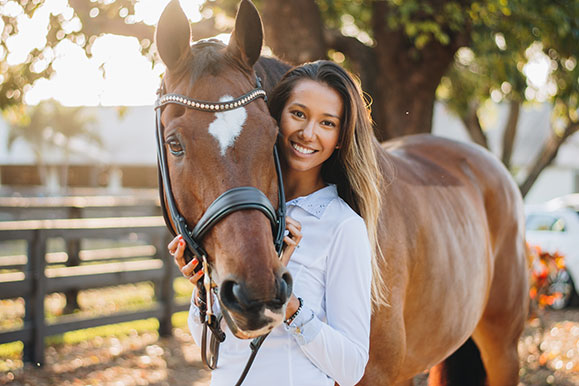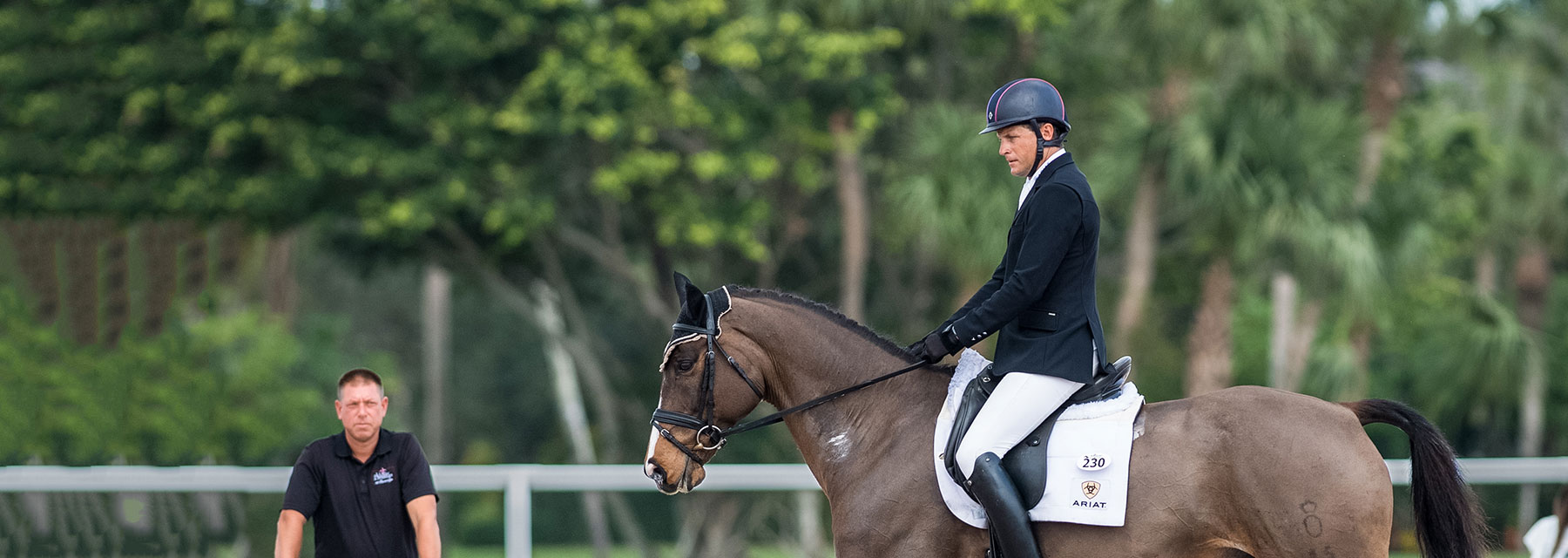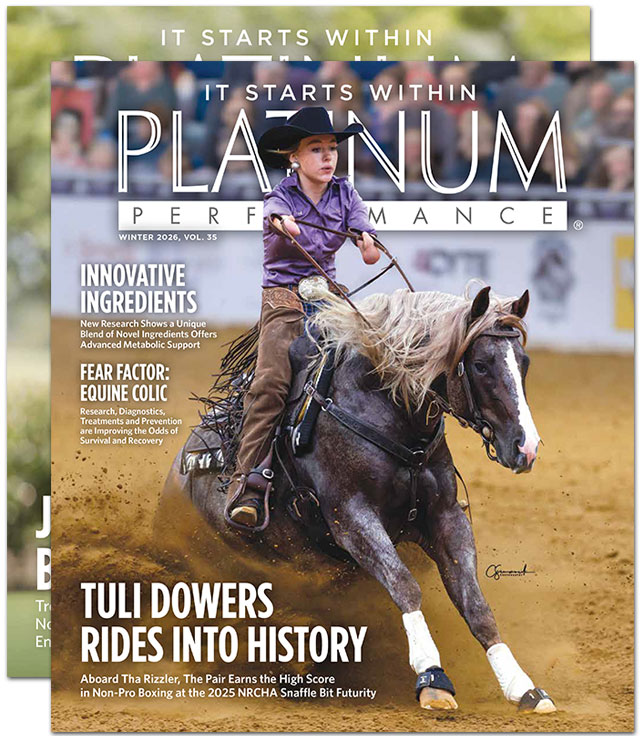Elite Dressage Trainers Help Other Disciplines Reach New Levels
In botany, cross-pollination provides superior qualities arising from crossing hybrid organisms, also known as hybrid vigor. Aside from helping in evolution, the crossed offspring are more viable and resistant to disease. There is the possibility of achieving new desirable characteristics and eliminating undesirable characteristics of the parent plants. The benefits of cross-pollination in nature are plentiful. Applying this same principle to equestrian sport results in a cross-training opportunity capable of lifting equestrian athleticism to new heights. Exchanging the knowledge and ideas from the heralded basics of classical dressage and applying it to other disciplines elicits enrichment in any horse’s training. Dressage may be the perfect pollen across all equine disciplines.
cross-pollination
[kraws-pol-uhney-shuh n]
noun
1. Botany. The transfer of pollen from the flower of one plant to the flower of a plant having a different genetic constitution.
2. A sharing or interchange of knowledge, ideas, etc., as for mutual enrichment, cross-fertilization.
Dressage is a French term meaning “training” and is defined by the Fédération Équestre Internationale (FEI), the international governing body of equestrian sports, as “the highest expression of horse training.” The most fundamental basis of dressage is to develop a horse’s natural athletic ability and willingness to perform, thereby maximizing its potential as a riding horse or increasing its overall rideability. The expectations from dressage are that the horse should respond smoothly to minimal aids from the rider, giving the appearance of effortless synchrony of horse and rider. The horse willingly performs to nearly invisibly requested cues. Benefits of dressage training are vast for any horse as it hones natural balance, obedience, flexibility and boosts mental and physical confidence. All of these attributes are applicable to other high performance English sport horses but also to western disciplines, pleasure horses, carriage horses, hunters, halter horses, the young and the old alike. Trainers Scott Hassler and Ellesse Jordan Tzinberg exemplify how the classical riding style and timeless movements of dressage can add depth and athleticism to every horse from any discipline.
Scott Hassler knows a thing or two about dressage. He is the owner and lead trainer of Hassler Dressage based out of the stunning Riveredge in Chesapeake, Maryland, and Wellington, Florida. As an internationally respected trainer, Grand Prix competitor, master clinician and former U.S. Equestrian Team young horse dressage coach, he knows personally the importance dressage has on horses of all ages and stages of training. He was recently asked to share his expertise and be a specialty coach for some of America’s top three-day eventers and helped to sharpen the dressage skills for U.S. Eventing Team riders Phillip Dutton and Boyd Martin at the 2018 Land Rover Kentucky CCI****. Hassler recalls the experience, “It was very simply, amazingly FUN! They are two great people, two great horsemen, two great talents and are so open-minded to learning. They’re both so coachable and have no ego!”
Ellesse Jordan Tzinberg has also seen first-hand the impact that dressage cross-training has on other disciplines. Tzinberg is an international Grand Prix dressage rider who recently competed with her superstar horse, Triviant, at the 2018 World Equestrian Games in Tryon, North Carolina. She rides and trains in Wellington, Florida. In addition to her thriving dressage business, Tzinberg has found a niche using both her riding and training skills to take elite circles of eventers and show jumpers to new heights, including the number one ranked show jumper in the world, Kent Farrington and his clients. Tzinberg greatly admires Farrington’s program. “Kent is a top rider who understands what it takes to make an equine athlete and rider, and, fortunately, dressage is an important part of his program.”

PHOTO BY FARAH BUTT PHOTOGRAPHY
“The benefits dressage offers to any horse’s training are improved muscle conditioning, improved soundness and flexibility, improved rideability and improved behavior.”
— Ellesse Jordan Tzinberg, International Grand Prix Dressage Rider & Trainer
Hassler and Tzinberg recognize what a solid dressage foundation can offer to even elite horses trained for other sports as well as their riders. It is an excellent cornerstone for every horse as it focuses on the correct basics of symmetry and balance, self-carriage, responsiveness, elasticity and the communication between horse and rider. Hassler notes, “Any time that we are exercising horses to be more balanced on the hind end and lighter on the forehand, or perform exercises that have the muscles become soft and supple can only benefit soundness and a happy mental state for the horse due to comfort. A correct dressage base for a horse promotes the happy well-being of the horse and sets the horse up for the stress and demand of high performance.” Tzinberg expands on a similar sentiment, “Like so many things in life and in sports, the foundation is key. Dressage is essentially the foundation, the core and the building blocks of most, if not all, disciplines. The benefits dressage offers to any horse's training are improved muscle conditioning, improved soundness and flexibility, improved rideability and improved behavior. Before we can get a horse to go to a jump, we first must make sure that horse can travel in a straight line, directions forward and respects our aids enough to, in fact, go over that jump. The technical flatwork done at home can make all the difference in a jump-off or three-day event standings.”
There are certainly common denominators when training any horse but also many differences in training approaches and expectations that need to be tailored to the individual horse and its background. For example, three-day eventing horses have to focus on three specialties and must have a capable level of fitness to perform a dressage test, gallop a cross-country course and then navigate a show jumping course. Of the similarities and differences in training techniques, Hassler says, “The training is similar in that you want the horses, both trained for dressage and three-day eventing, to be responsive and on your aids. It’s also similar in that you want the basic workout to include work that helps the horse to become elastic and supple with good adjustability. But the event horses are different in that the athlete you are working with is conditioned differently. These horses are most likely very fit, specifically wind fit and energy fit. You need to pay a lot more attention to tension and tightness because the eventing horse does not have daily focus like the dressage horse does on suppleness and elasticity. The eventing horse has to focus on being wind fit and due to all of the other elements they have to train, they can understandably be tighter.”
Straight-forward exercises can often be the most effective when implementing dressage techniques with horses from a variety of training backgrounds. Hassler has two techniques that he relies on for elasticity and increasing suppleness. “I have a simple equation that I always try to focus on in my training for any horse. It is that power and expression cannot overwhelm suppleness, adjustability and lightness of the aids. One exercise I find very helpful that I use often in the eventing world is to adjust canter speed through incremental numbers instead of just thinking it’s all one speed. These horses need to get elastic since they’re tight, so they need to build forward gradually, through what I call numbers. They need gradual speed increases and gradual speed decreases with suppleness and self-carriage before doing it promptly the way it would be performed in a test. Secondly, not unique to the eventing world but certainly common, I think one of the “make or breaks” is flying changes. Spending time suppling and riding the outer side of their body, which would be the side they are going to change into, is very important. Since they are tight and sensitive, they can either explode into the change or be late out of tightness and nerves. Suppling the outside of the body preps them for comfort changing into the new lead. Exercises that help a horse become light and responsive to the aids produce a horse that is ready to take on the demand of their discipline at its highest level.”
“I have a simple equation that I always try to focus on in my training for any horse. It is that power and expression cannot overwhelm suppleness, adjustability and lightness of the aids.”
— Scott Hassler, Owner & Lead Trainer of Hassler Dressage
Tzinberg uses transitions and straightness exercises to address carriage, connection and balance. “Many of the exercises I do with my other discipline riders and horses are similar to what I do with some of my dressage horses. For example, I will practice transitions for all horses several times, going from collection to extension. A key difference is how we apply it. For jumpers and eventers, when I have them work on these transitions, we often won’t be as picky with the frame of the horse as long as the back is working and the hind legs are engaged. We will also practice the transitions in different seats, like half seat, to make the exercise more applicable. When I do the same exercise with my elite dressage horses, I really focus on the shape and carriage of the horse, as well as using the collected canter to prepare for things like pirouettes. In the real world, a show jumper is not going to jump around a course in a collected canter with a perfect uphill frame and super clean changes. However, if that jumper can go around the course and seamlessly extend and collect and make small quarter pirouette turns when needed it could be all the difference between a 1st and 2nd place finish.” She continues with another go-to technique, “There are a lot of dressage exercises that are very beneficial and applicable to other disciplines. One of my favorite exercises to do with jumpers and eventers is to have them ride their horse in canter straight down the middle of the ring, which would otherwise be known in a dressage arena as the centerline. When they do this, the rider should note if their horse is truly staying between both legs, steady on the contact and in front of the rider’s legs, yet waiting. Often times horses will bulge one way or struggle keeping the same lead while being absolutely straight, while the rider will often be exposed if he or she is stronger on one rein or leg or seat. Though quite simple, this exercise is key to establish a steady connection, balance, self-carrying and a straight horse.”
As expected, both trainers find not only immense benefits for the horses, but that the benefits naturally extend to the riders as well. Hassler explains that it is simply easier for a rider to focus on their own position and upper body when the horse is through and light on the aids, which ultimately softens the horse’s back. When the back is softened, the forehand is lighter, and the rider can more easily work on their own position and upper body. The horse is naturally more malleable and tempo and balance can be adjusted, allowing the rider to focus on and improve their own position. Tzinberg also notices that implementing dressage techniques improves the rider’s position as the seat becomes stronger and more effective. The ripple effect from this causes the horse’s behavior to improve, becoming more attentive resulting in the ultimate goal of harmony between horse and rider. “As they say, it takes two to tango, which goes the same with equestrian sport. Dressage is extremely beneficial for the riders as it improves a rider’s balance, effectiveness, connection with the horse and ultimately feeling and communication with their horse. The goal with dressage at all levels is to achieve harmony. You will see top riders displaying extremely difficult and challenging exercises with their horses all with the smallest of movements, like the horse and rider are one. Now imagine when a show jumper is on course and their horse comes back, extends and turns all in sync with their ride. That is all strengthened and worked on at home on the flat,” she concludes.
Dressage isn’t just for dressage horses. The interchange of knowledge and ideas for enrichment across disciplines creates a more balanced, more enjoyable ride. The applications of this timeless flatwork are endless, and the principles of dressage may be the secret ingredient for a better athlete from any background.

by Emily Smith, MS,
Platinum Performance®

